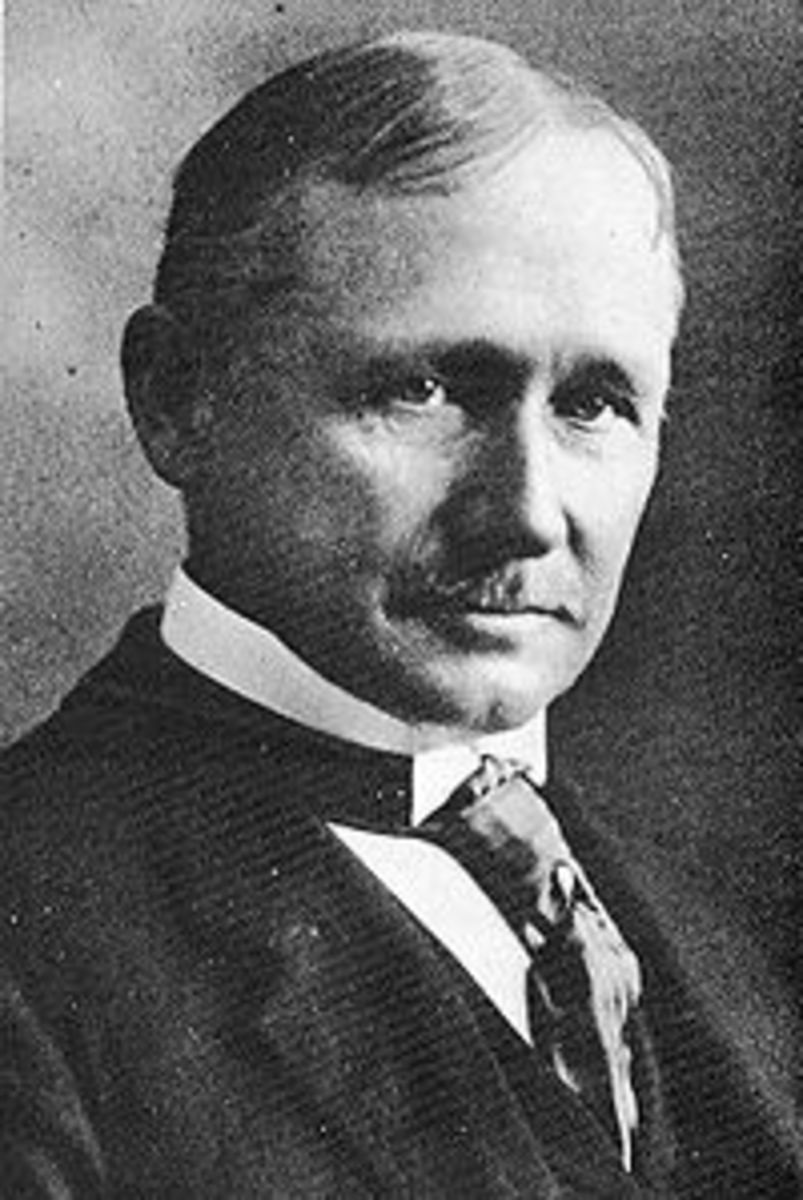A Simple Guide to Change Management

Managing Change
Change is inevitable and it is constant. The ability to manage and adapt to change is an essential quality for all of us. Our personal and professional lives are under constant pressure to change due to a variety of external factors and variables. We deal with change everyday - whether it is in the family or at work. We learn new tricks, modify behaviour and go with the flow.
Yet, at the same time, many of us may deny, resist, bemoan and bicker about change.
We also try to make changes that involve us or a wider team. This tends to be hard at times. Even enforced change where there is no other option tend not be fully embraced.
Many attempted changes shrivel at the first blossom. This is not always because the changes proposed were futile but mainly because the way persons and organisations go about making these changes. These aren’t well thought through and planned.
Change like many things is a process. Perhaps if we reflect on this process, it will help us to learn some tips and tricks to make it positive and productive.

'The secret of change is focusing all your energy, not on fighting the old, but in building the new'
— Socrates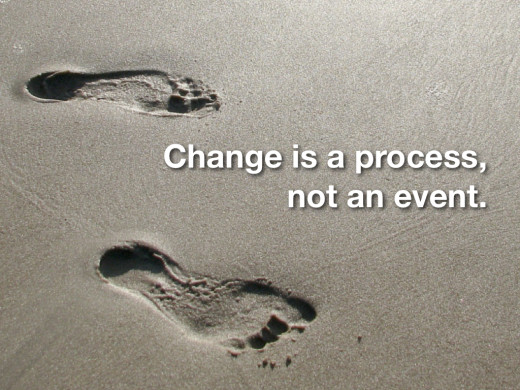
How do you usually respond to a proposed change?
Responses to Change
Change for the sake of change is unproductive. Change for the sake of progress is highly rewarding. In order to determine the necessary steps for progress we need to determine where we are and where we want to be/we should be. The aspirations for making the necessary changes can be motivated by wanting to improve productivity, quality, morale or many other goals.
Despite this the collective human response to proposed change is initially one of anger, denial and frustration. Elisabeth Kübler-Ross, M.D., a Swiss- American Psychiatrist, proposed the five stages human response to grief. This is not dissimilar to the response to change!
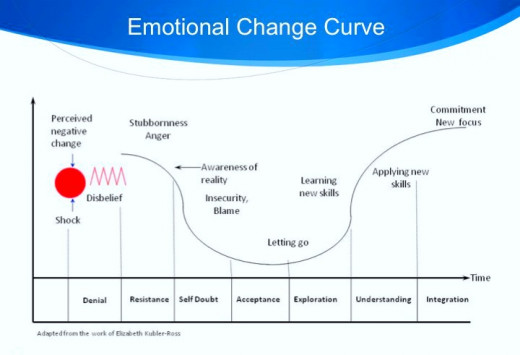
As you can see even the motivated personnel can feel denial, resistance and self doubt initially before moving to acceptance, exploration, understanding and integration.
Facilitating change is not easy when facing such initial adversities. Persistence and positive outlook are vital to wade through the swamp of initial resistance to the solidity of acceptance.
Seven Stages of Response to Change
Stage
| |
|---|---|
Denial
| Denial is a conscious or unconscious refusal to accept facts, information, reality, etc., relating to the situation concerned. It's a defence mechanism and perfectly natural. Some people can become locked in this stage when dealing with a proposed change - this needs to be considered.
|
Resistance
| Anger can be a reaction to change and can manifest as ressitance to change. This can be due to stubborn hold on status quo, genuine concerns over change, lack of clarity or purpose
|
Self-Doubt
| When the gradual realisation that change is inevitable starts to sink, self-doubt may emerge due to the awareness of the scale of change, one's own capabilities to adapt and insecurities
|
Acceptance
| Enforced or accepting the inevitable. Acceptance could be the first step towards a positive outlook but not necessarily so.
|
Exploration
| A sense of objectivity, warming to the change, curiosity or the sense of inevitability will lead to an early exploration- it is crucial at this stage for change agents to facilitate and support exploration
|
Understanding
| An understanding is crucial to adapting to change. Here change managers will have to simplify, support, show links and amplify the benefits - in short an ideal opportunity to 'sell' the change.
|
Integration
| Soon the change is accepted, new skills learnt and everything becomes integrated into new practice. It is vital to celebrate, encourage and reward this adoption and allow time to embed new behaviour.
|
Modified from ' Five Stages of Grief ' by Elisabeth Kübler-Ross

Of course, this is not a 'set' response to all change. Some changes are welcome and will be celebrated immediately, especially if it is perceived as positive.
It is also possible that some people are eager to change and may jump at the opportunity while others may have a more considered response. Both extremes may not be ideal. Jump in too early and we may not weigh up the consequences and impact. Delay too long and we risk being an outdated outlier / luddite.
As we can see below, when an innovative idea or change is proposed the way a group responds is a bell curve of innovators who bring in the change, early adapters who would try it on, early and late majority who will follow and the Laggards who will resist until it is no longer possible to do so.
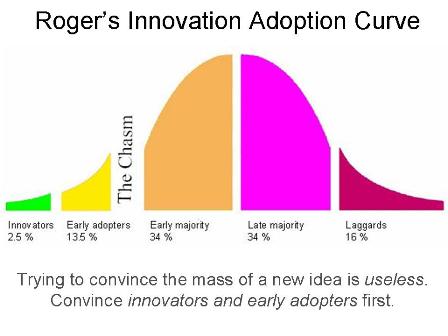
Mohan's Six Steps to Change Process
I can hardly resist an opportunity to create a mnemonic to change process. For me the six simple steps to change process has helped me make personal and organisational changes flow smoothly.
In order to ensure that I remember this I have used the word CHANGE as a prompt. These are based on well researched methodology and my interpretation of this wealth of evidence in managing change:
So what steps do we need to manage change?
- Clarity of Goals
- Having Ownership
- Assessing where we are
- Naming SMART objectives
- Getting an Action Plan
- Evaluating the success
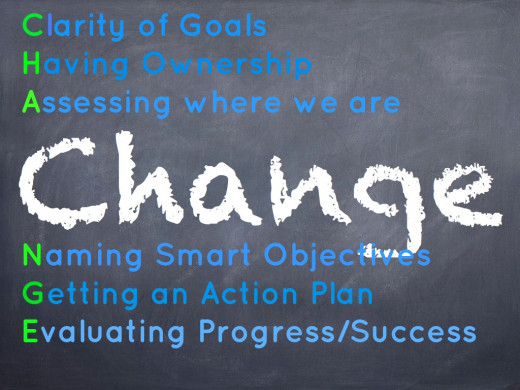
Ensure clarity of the vision for change
Involve everyone through brainstorming
Seek opinions but emphasise on the need to look at all angles
Remove subjectivity and individual fears initially
Cycle through positivity, creativity, need before anyone moves to things that could go wrong
Facilitate Flow of ideas
Clarity of Goals
One person’s vision for success varies wildly from others. I often find that we assume there is a shared goal among all individuals in a team or an organisation, often this may not be the case. In order to ensure that everyone is on board with the vision, it is important to communicate and seek consensus on the vision. These are broad aims and not objectives. They come later. The Broad aim may be something like ‘ We need to increase client satisfaction’, ’ We need to increase profits’, ‘ We need to establish as market leader’.
This exercise is better done face to face with all the stakeholders. It is difficult to communicate vision through e-mails and letters. As much of the visioning comes from energy, enthusiasm and commitment – this is better communicated face to face in a robust exercise that could be a brainstorming session, an interactive workshop or a group exercise.
During this phase we can use tools such as SWOT analysis (Strengths, Weaknesses, Opportunities, Threats) , Force-Field analysis, Fish bone charts and many others to debate the pros and cons on the proposed change if we feel the need.
Here's a powerful presentation on the power of crowd/group visioning.
The Power of Visioning
Having Ownership
The vision for change may derive from one person. It does however need to be owned by all involved in order to achieve success. We need to make sure everyone understands the benefits of the proposed change. Each person may respond to a different motivation. Some may do it for the glory, some for the rewards of money/resources, some may do it for fear of punishment and others may do it for the sheer pleasure of doing it.
Being aware that one person’s motivating factor may not be the same as the others is vital in seeking ownership.
There are a lot of theories of motivational factors- some like Maslow’s you may have already heard about others may be new – they are summarised in the following diagram. The broad division of motivational factors are intrinsic and extrinsic.
One persons motivating factor will differ from another's
Be aware of intrinsic and extrinsic motivators
Perceived threats to safety and security may be powerful detractors
Create a safe space for shared ownership where hearts and minds align
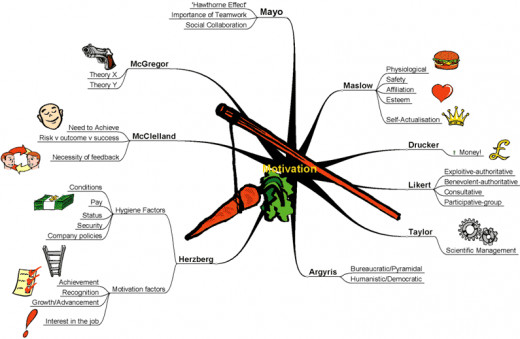
Assessing where we are
Once the vision is established and shared ownership sought, we can move on to the diagnostic stage. This is in establishing current realities – seeking to find where we are objectively. It is important to do this in a structured manner – while instinctive assessments and perceptions may indicate a rough idea of where we are, it is with objective methodology we can get the evidence.
This may be a qualitative assessment or a quantitative one based on what we are assessing. Fact based, objective analysis is a powerful tool to establish where you are with regards to where you want to be. Audits, surveys, accounts, sales figures, lists help quantitative measures.
If we are assessing the ‘quality’ or ‘perceptions’ we may have to use a structured feedback process in the form of questionnaires, interviews and narrative summaries.
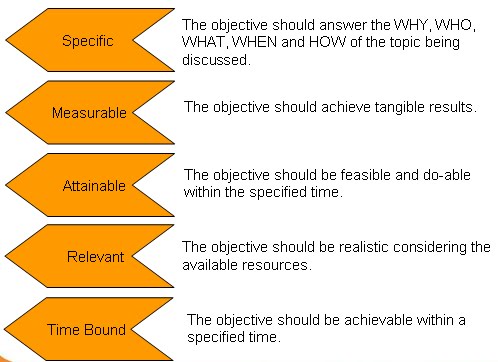
Naming SMART (ER) objectives
Once we have identified where we are we could set some objectives on where we want to be. This is where the dictum ‘SMART objectives’ comes in really handy.
Your objectives should be Specific – as we said earlier these are not broad aims or nebulous visions but very specific objective on where you want the organisation to be. It helps that the objectives are Measurable – qualitatively or quantitatively- this way you will be able to know whether you are making clear progress, it is also better to pick those you think are Achievable and the power to achieve them lie within. It is not good to choose objective where the success is dependant on external variables to a large degree. There should be a sensible agreement that these are Realistic at the outset and get consensus with everyone. Otherwise each person may have their own version of what they agreed to! A good rule of the thumb is to set clear Timelines against the objectives otherwise there will no sense of when we want to get them completed.
Many believe that the objectives could be SMART(ER). They need to Enjoyable in the sense they should reward everyone somewhat and they should always be Recorded so everyone is clear about them and not have their own versions of what they think it is.
Action Planning
Getting an Action Plan
We all know however good our objectives are, they can only be achieved through clear action planning. An ‘Action’ plan means exactly that- a clarity of what action, who needs to take it and by when. Many organisations come away with objectives that are left nebulous without assigned ownership, outcomes and time scale – this leads to stagnation and a sense of inertia.
Get everyone signed up to the plan. Perhaps it is useful to have different people within the organisation being responsible for different aspects to give them a sense of ownership and engagement. However, you need to determine this based on their capability and capacity. Whole team involvement (as much as possible) is key to a sense of achievement and ensures success. Adequate resources (money, time, people) need to be allocated to these plans to ensure success.

Evaluating the Progress / Success
If we have followed the steps above sensibly, we should be arriving at this point with a sense of achievement. As we have already made our objectives ‘Measurable’ – we should now we able to perform this measurement to ensure that objective has been achieved.
Once again, these measures may be qualitative (audit, list, targets) or quantitative (questionnaires, feedback surveys) that will give us the measure of success.
Not every objective may have a smooth journey. In these circumstances the evaluation will help us to diagnose any kinks in our plan and deal with them appropriately. Being impartial and critical will help our organisational learning as to what factors may need to be changed to ensure success.
More importantly celebrate the success, reward those who worked hard at it - pat their backs, compliment their hard work, praise their creativity and endurance, validate their roles. All too often we don't stop to enjoy the change and jump straight ahead to the next big change. It is vital to give the pace of change to integrate and enable a culture of willingness to change and improve productivity.
Measure the success or review the process
Modify measures if there are hurdles or lack of progress
Celebrate success
Reward enthusiasm, engagement and endurance
Give time to breathe before planning the next change!

Nihil constat nisi mutatio*
This short summary of change management principles should hopefully serve as an introduction and a diving board for further exploration. There are many resources spread across the web for those of you who prefer to ‘construct’ your own learning - this is hopefully a succinct summary.
As someone once said, if we always do what we have always done, we always get what we have always got. If we want something different, something new, something more than what we have – we will have to adapt and change.
For a life form that has evolved from its single celled existence to our current sentient being, shouldn’t we be embracing the very change that brought us here?
Best wishes!
*Nothing is constant except change
Mohan Kumar

© 2013 Mohan Kumar





